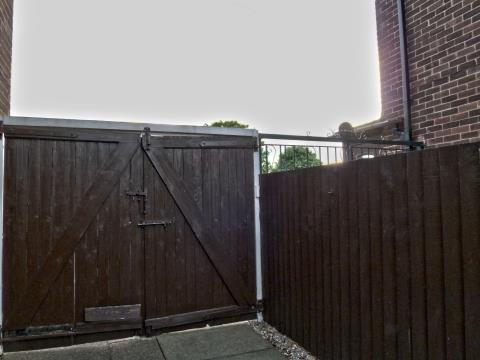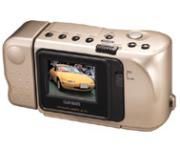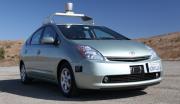Tell me about it! Swinton Insurance reckons people are increasingly not trusting their sat navs to get them around.
I’ve mentioned before about my negative experiences of Orange Maps – and how the damned system has TWICE decided that it is “unable to connect to the server right now” right when I need to know which way to go (and in the latter case, when it had taken me 300 miles towards my destination, and flaked out within a dozen miles of the important bit of most journeys – the end).
 The report says that those in the East Midlands are most likely to ignore what the sat nav is telling them. I wonder if that has anything to do with the A46. Or the Colwick Loop Road?
The report says that those in the East Midlands are most likely to ignore what the sat nav is telling them. I wonder if that has anything to do with the A46. Or the Colwick Loop Road?
You see, I couldn’t resist the temptation to buy a Tom Tom a few years ago. I played with it a few times, but the hassle setting it up (and the mess it always made on the windscreen when I took the sucker off) meant I never really bothered. Oh, I used it to get to Wembley Arena, Glasgow SECC, and Newcastle Metro Arena a few years ago (and a few other places), but then I had to carry the bloody thing around with me because I didn’t dare leave it in the car. It was a right pain making sure it didn’t get swiped out of your coat pocket either when you were trying to enjoy a gig.
But the most irritating feature was navigation of the Colwick Loop Road/Gedling Bypass. My Tom Tom was brand new, but its map database predated the Bypass - officially opened in 2007. So the Tom Tom tells you you’re driving across a field when, in fact, you’re on the Bypass heading to or from Burton Joyce and Southwell. I resented paying another £80 for an updated map, so I didn’t.
At the moment, a similar thing happens for most of the A46 and part of the A6097 between Widmerpool and Gunthorpe (my car has built-in sat nav now, and I sometimes use it to find new pupils’ houses – especially in rural areas). Since they’re converting this road stretch into a dual carriageway (and numerous bypasses), you spend most of your time on new sections of road – occasionally dipping back on to old sections – and the sat nav doesn’t like it one bit. It’s especially bad when you get near Bingham, because they have built a series of new roundabouts and unless you know where you are going, you will come to those that the sat nav doesn’t know about. Conversely, you’ll be told to leave at a certain exit when you’re not actually on a roundabout – the sat nav is making a best guess.
These days I put my faith in Google Maps. Until I got built-in sat nav, I always used Google to locate my new pupils anyway - just the last section of the journey. But that experience with Orange Maps resulted in the discovery of the Android App for Google – and that is the best system I’ve found. It is free, and it is likely to be updated more regularly than all the other systems put together.
Another advantage of Google on Android is that the phone is small and you can clip it over an air vent in the car. That way, you just need to take a quick glance instead of climbing into the footwell to see it (admittedly, the central instrument console gives cut-down directions from the main sat nav in my car, so I’m exaggerating a bit there).
Of course, I could also stick it right in the middle of my windscreen like the chavs do these days.
 Many, many, many, many, many… you get the idea… years ago, I saw a documentary where they had “transmitted” electricity a few metres across an office to light a bulb. The presenter even stood in the middle to show how safe it was. One thing he didn’t go into detail about, as far as I remember, is how inefficient this was. You might consume 100 watts of power on the transmitter side, but far less than that made it across the void to be used by whatever it was you were powering.
Many, many, many, many, many… you get the idea… years ago, I saw a documentary where they had “transmitted” electricity a few metres across an office to light a bulb. The presenter even stood in the middle to show how safe it was. One thing he didn’t go into detail about, as far as I remember, is how inefficient this was. You might consume 100 watts of power on the transmitter side, but far less than that made it across the void to be used by whatever it was you were powering.

 I bought my first digital camera many, many years ago. It was the Casio QV-10A, and it was 1995 if my memory serves me correctly. It had a resolution of 320×240 pixels (so 0.25M) and internal storage that could hold 96 pictures (which wasn’t that bad). It had fixed focus, and a very basic zoom. At the time, it was state-of-the-art technology, and cost around £500.
I bought my first digital camera many, many years ago. It was the Casio QV-10A, and it was 1995 if my memory serves me correctly. It had a resolution of 320×240 pixels (so 0.25M) and internal storage that could hold 96 pictures (which wasn’t that bad). It had fixed focus, and a very basic zoom. At the time, it was state-of-the-art technology, and cost around £500.
 I’d been planning on getting a good digital SLR at some point – one with a high ISO range – but the abject failure of the Sony at the Glasgow SECC Rush gig made me rethink my immediate plans. I had an hour between lessons, and nipped into PC World on last Sunday. I was looking specifically for resolution and optical zoom, and as I scanned across the range I was also attracted to the full HD video facility offered by the Panasonic Lumix TZ9 (12M and 12x optical zoom also did it for me). Plus, it was only £150 – I’d been ready to spend much more than that on an SLR.
I’d been planning on getting a good digital SLR at some point – one with a high ISO range – but the abject failure of the Sony at the Glasgow SECC Rush gig made me rethink my immediate plans. I had an hour between lessons, and nipped into PC World on last Sunday. I was looking specifically for resolution and optical zoom, and as I scanned across the range I was also attracted to the full HD video facility offered by the Panasonic Lumix TZ9 (12M and 12x optical zoom also did it for me). Plus, it was only £150 – I’d been ready to spend much more than that on an SLR. This is hot news at the moment. The
This is hot news at the moment. The  The report says that those in the East Midlands are most likely to ignore what the sat nav is telling them. I wonder if that has anything to do with the A46. Or the Colwick Loop Road?
The report says that those in the East Midlands are most likely to ignore what the sat nav is telling them. I wonder if that has anything to do with the A46. Or the Colwick Loop Road? People had better buy up their gadgets before the price goes up. If
People had better buy up their gadgets before the price goes up. If  I’m sorry, but this is sci-fi nonsense. No one in their right mind is going to go for this as a means of personal transport.
I’m sorry, but this is sci-fi nonsense. No one in their right mind is going to go for this as a means of personal transport.